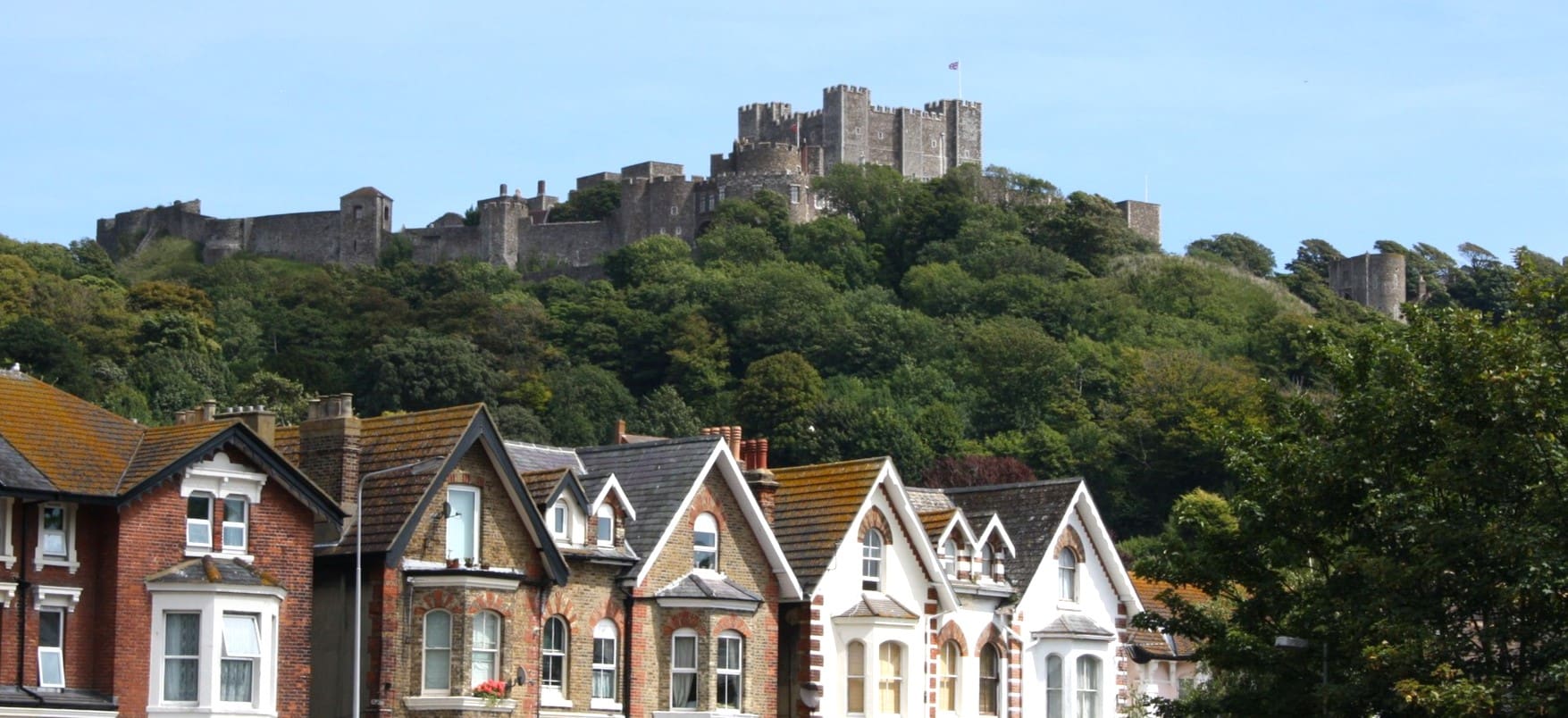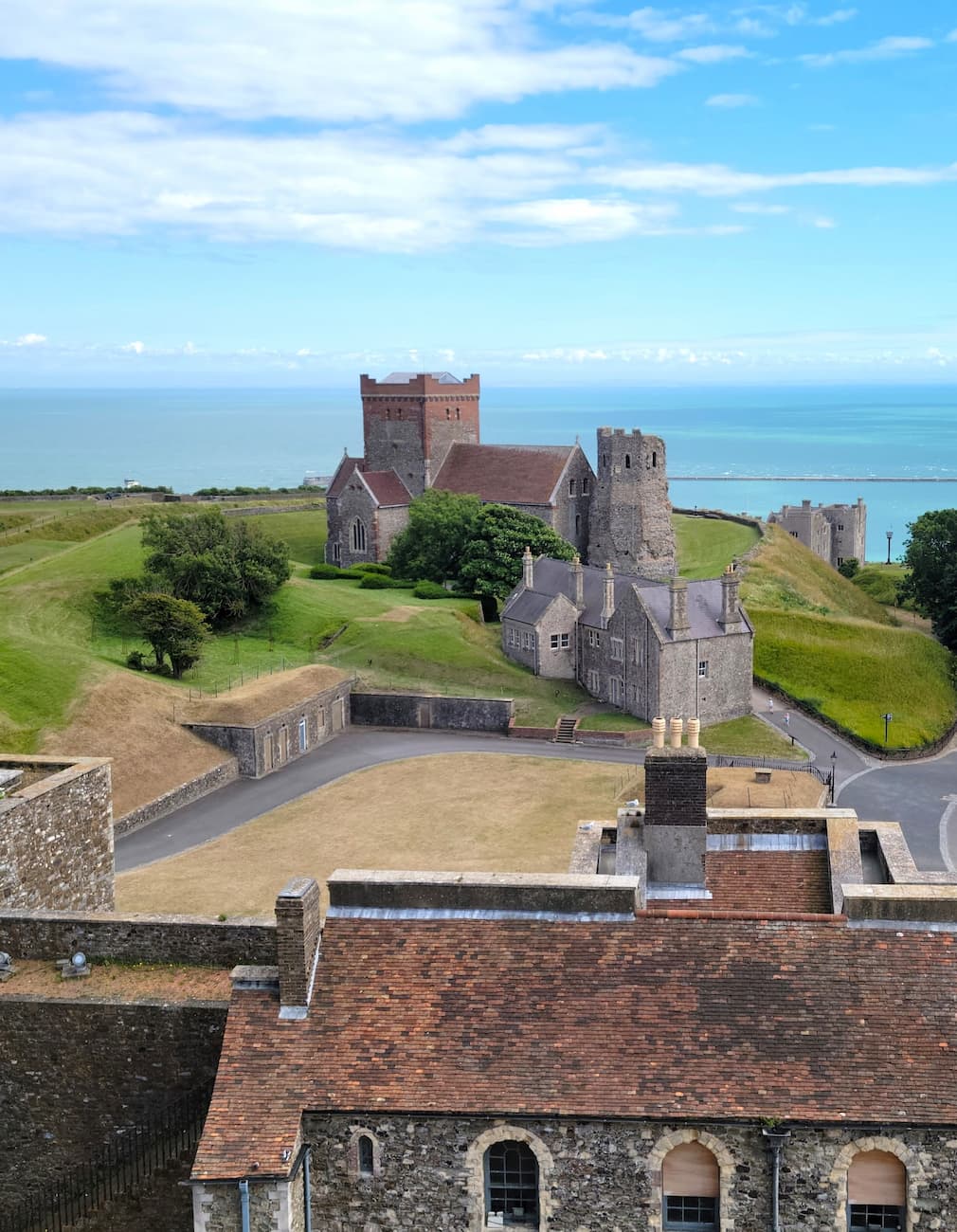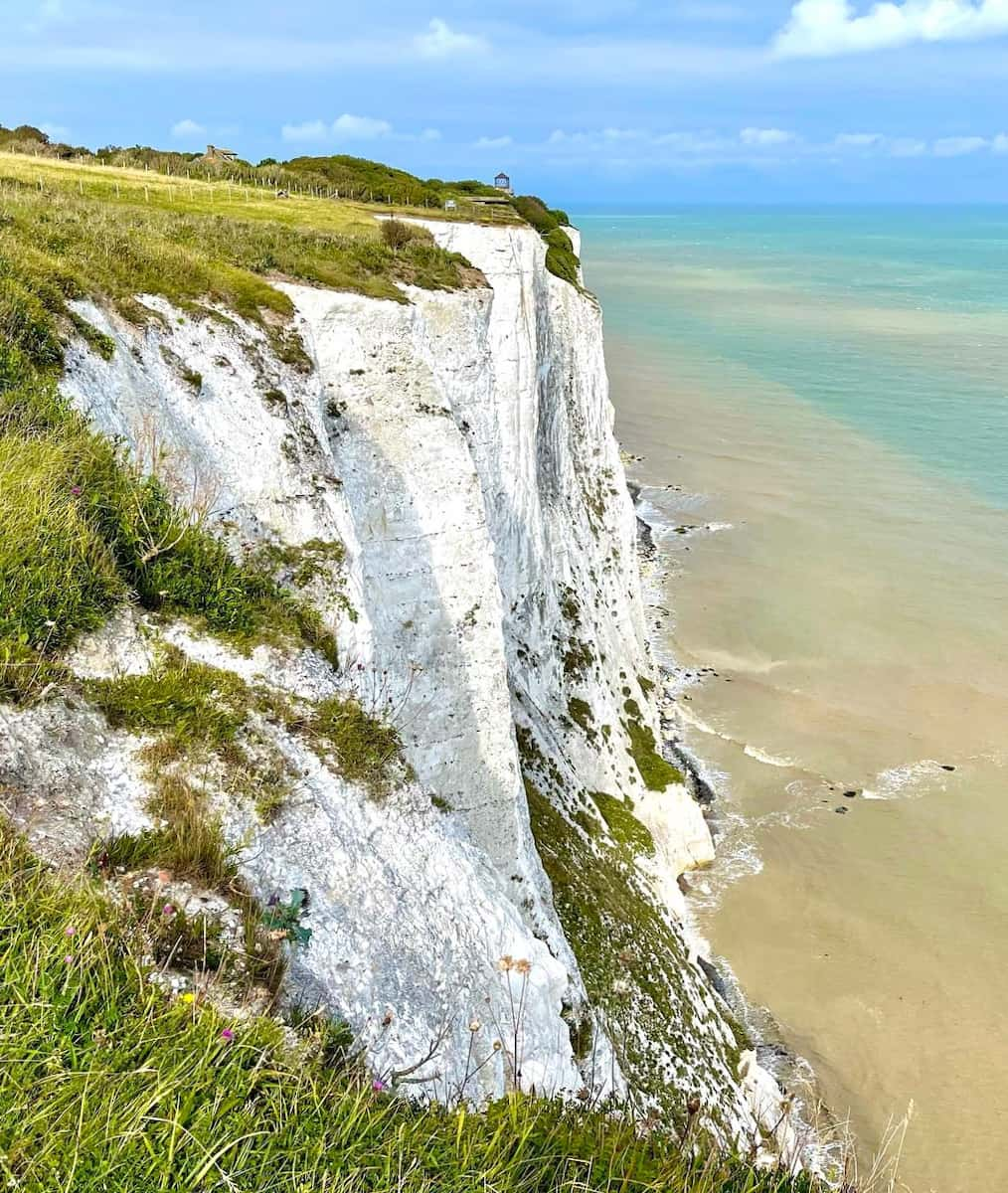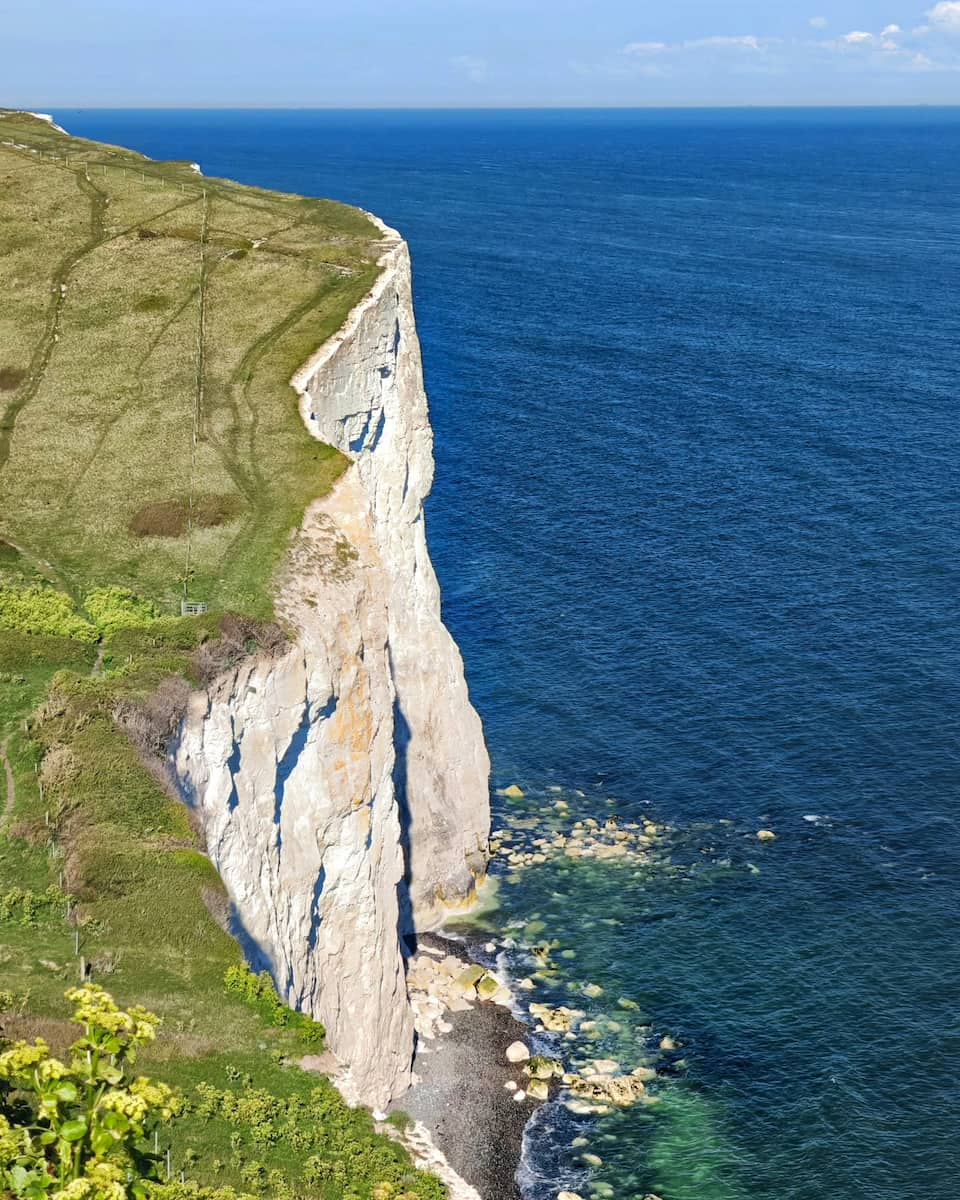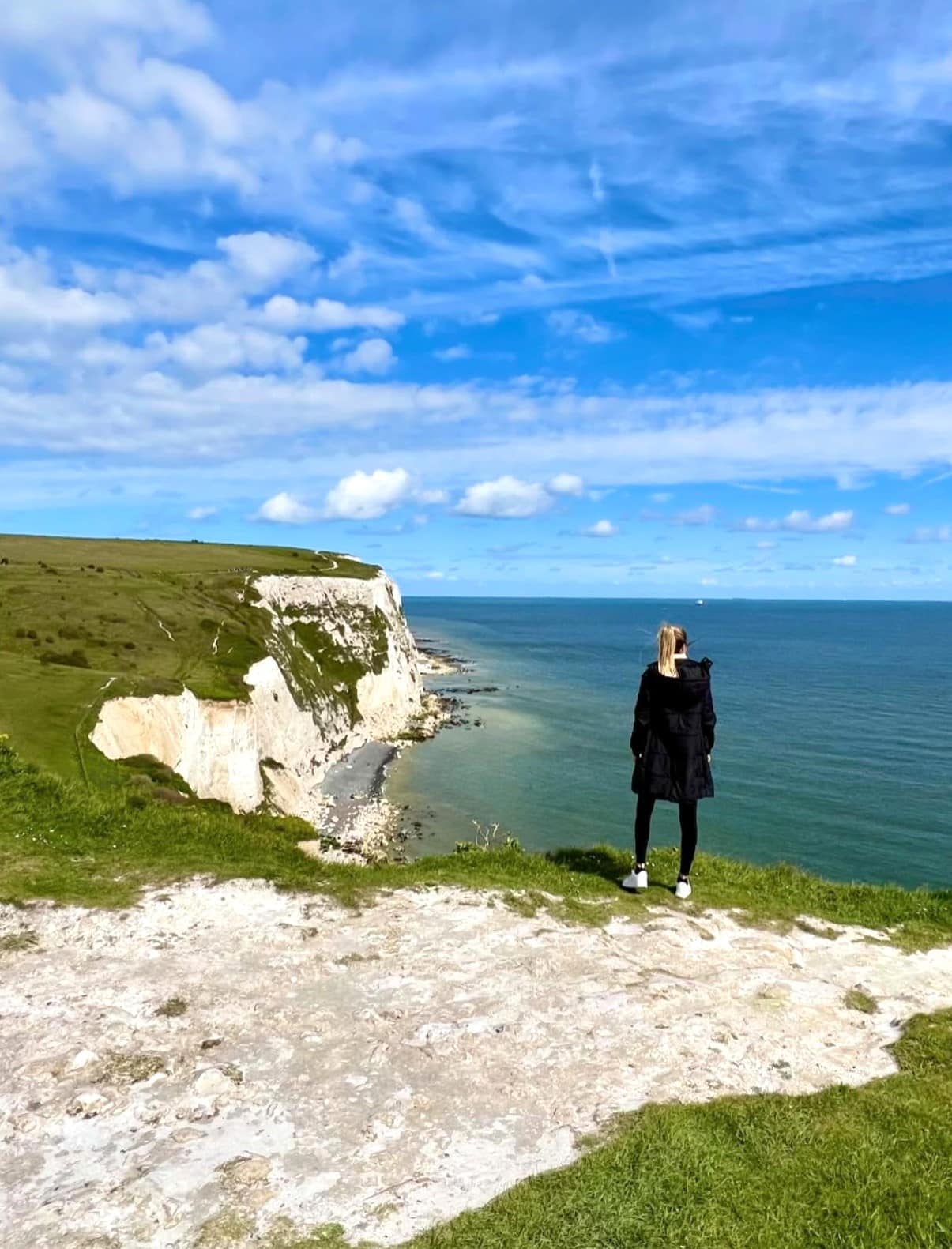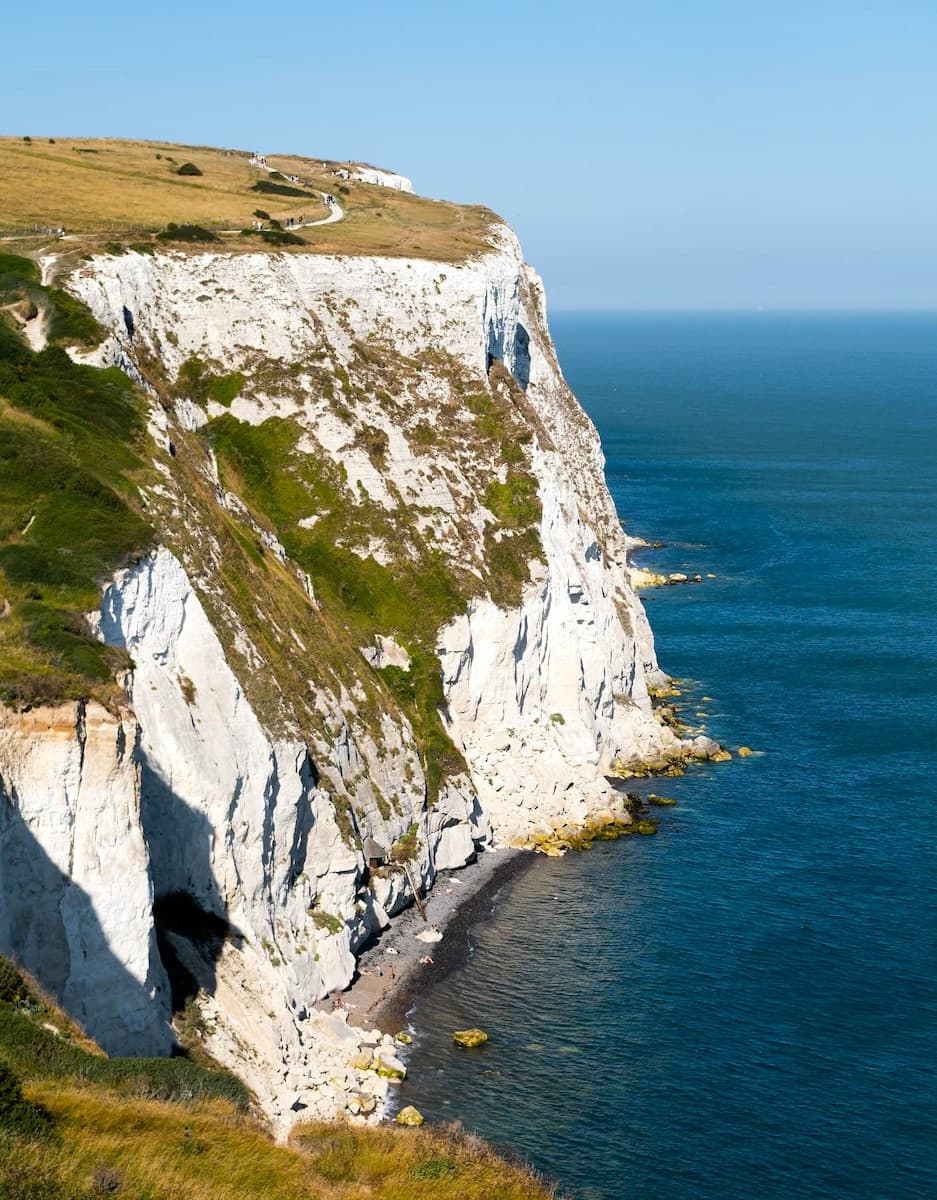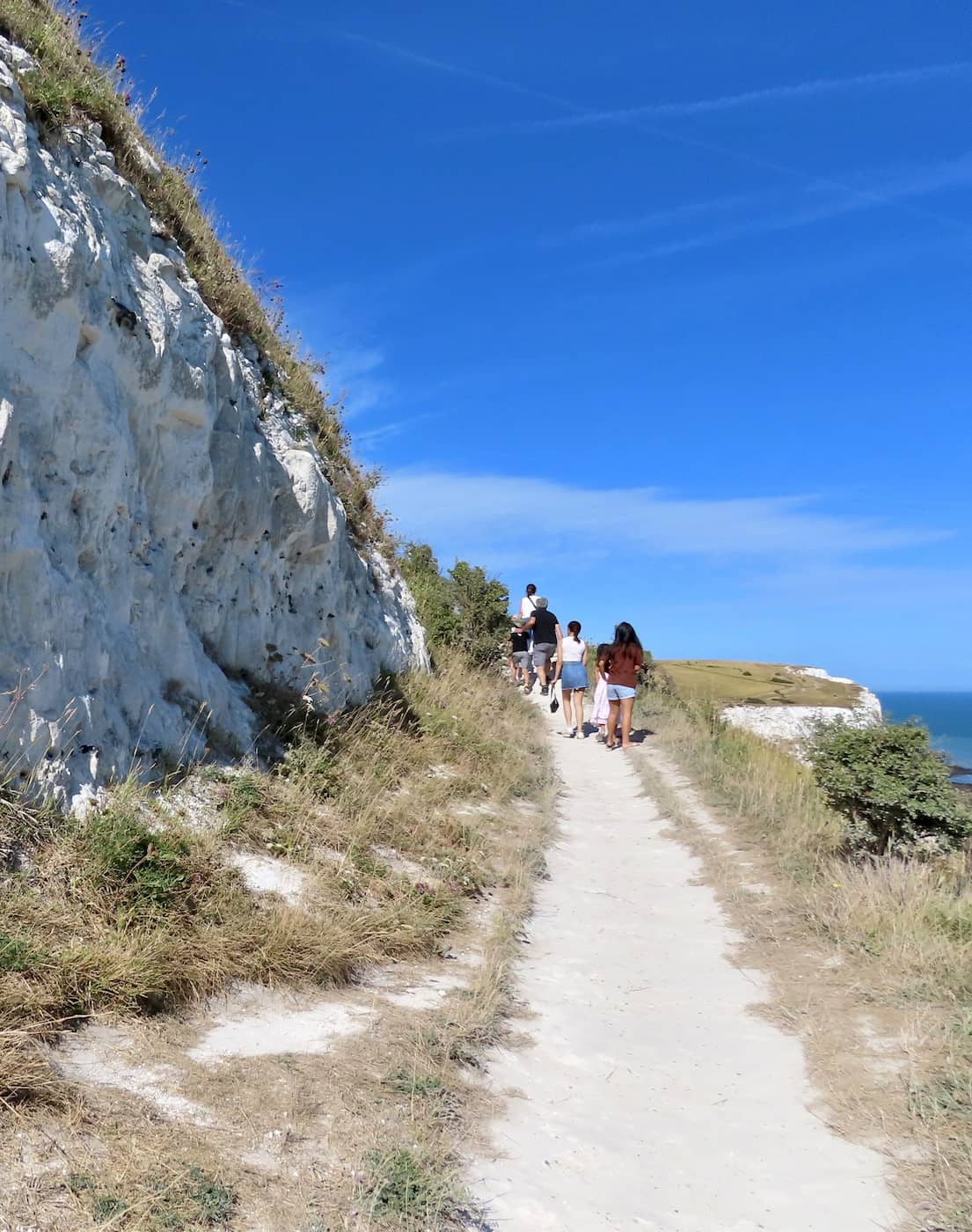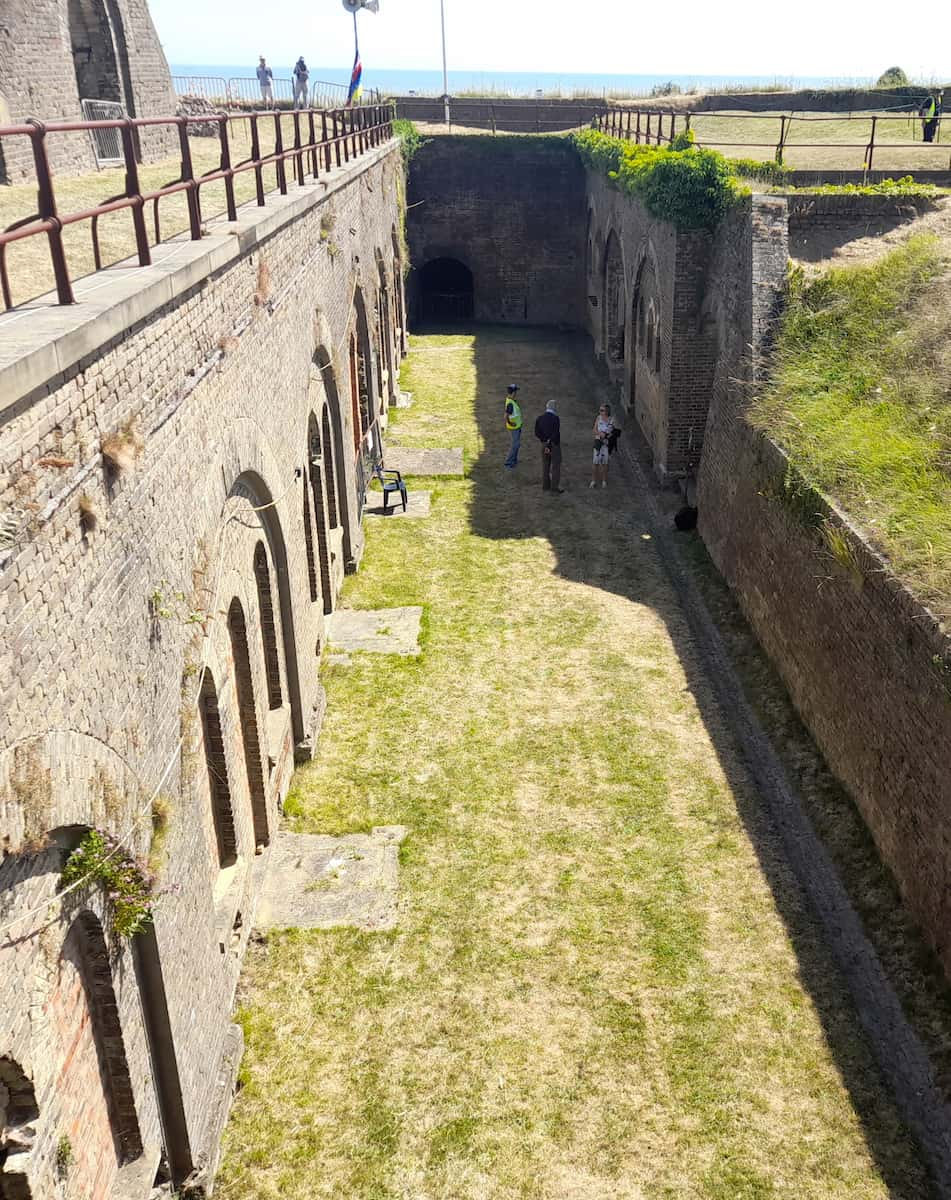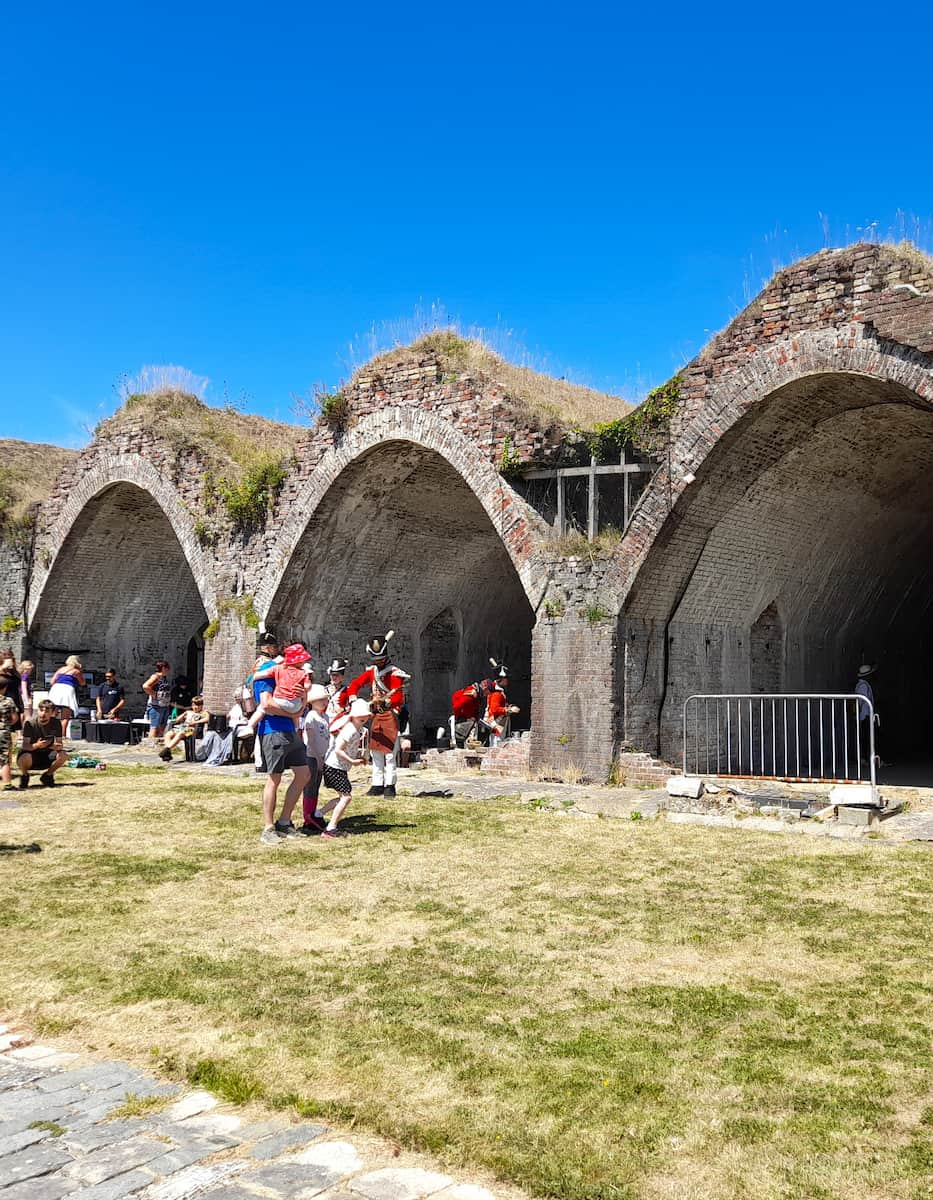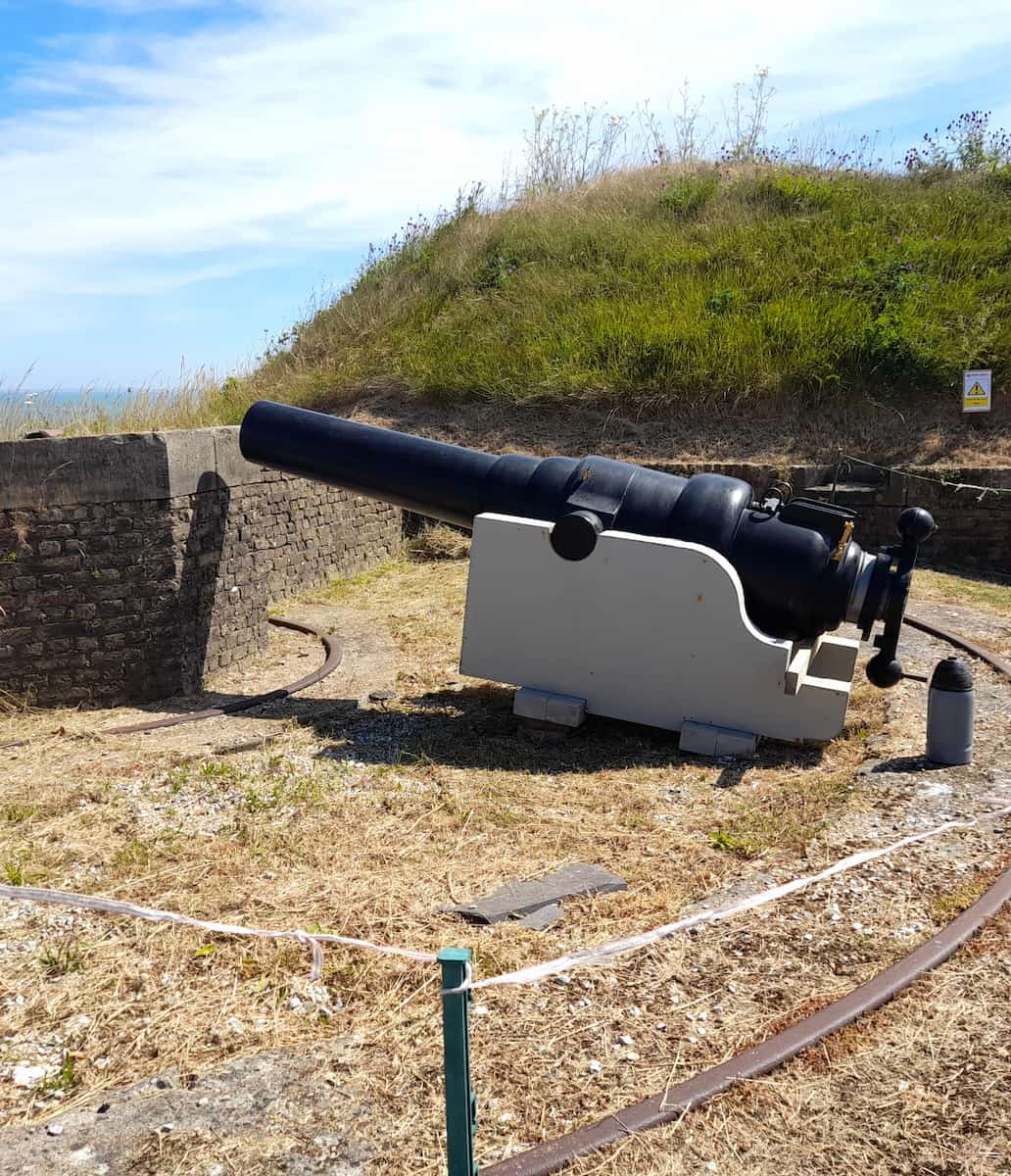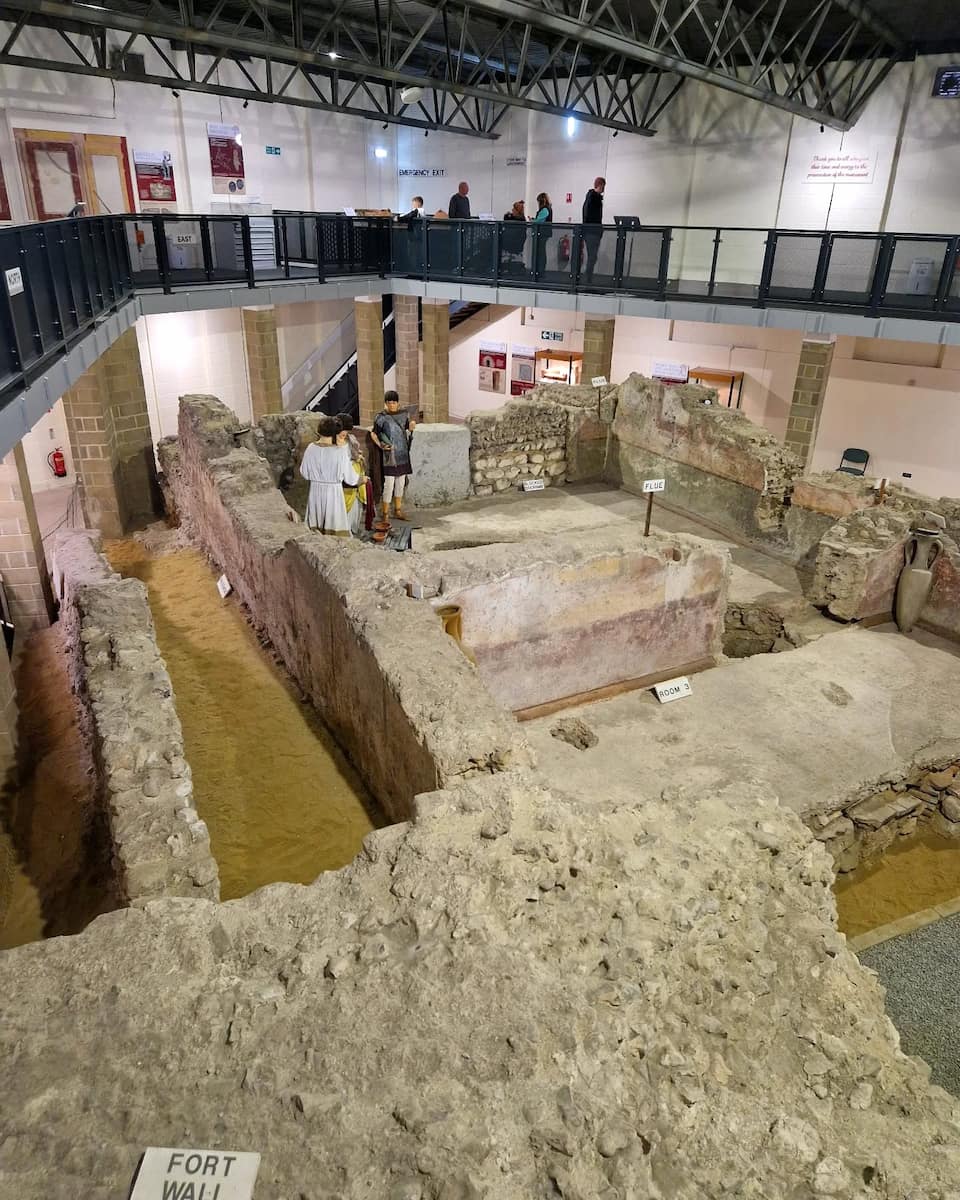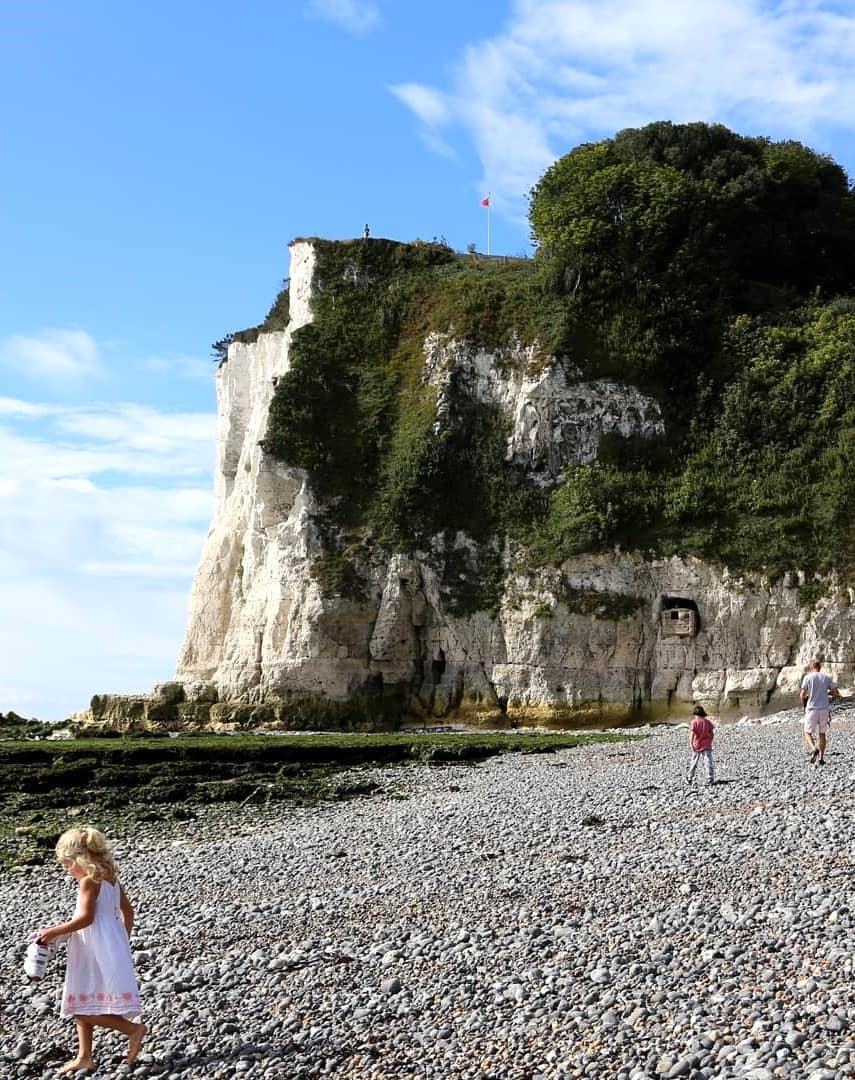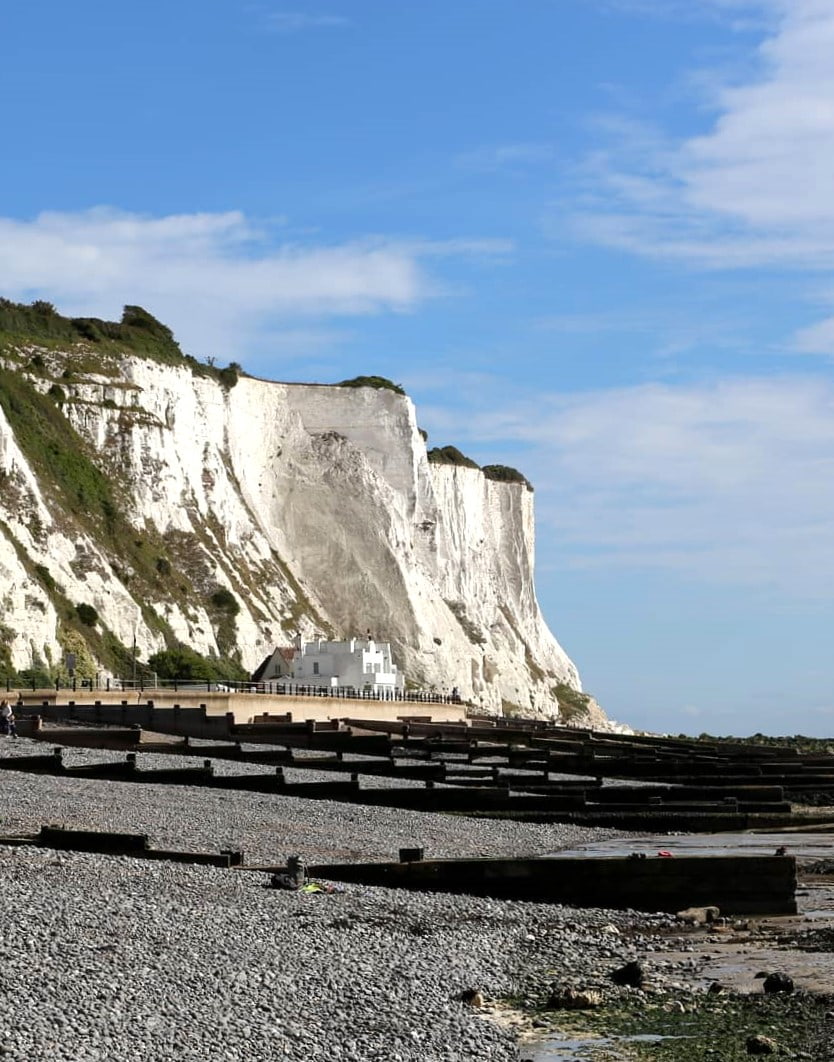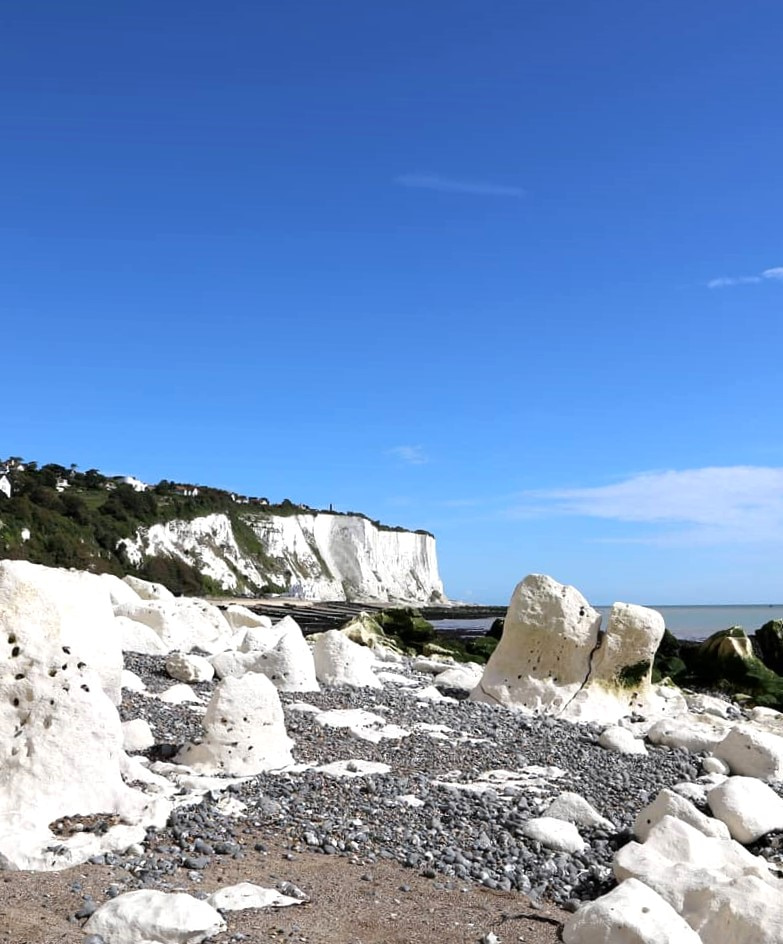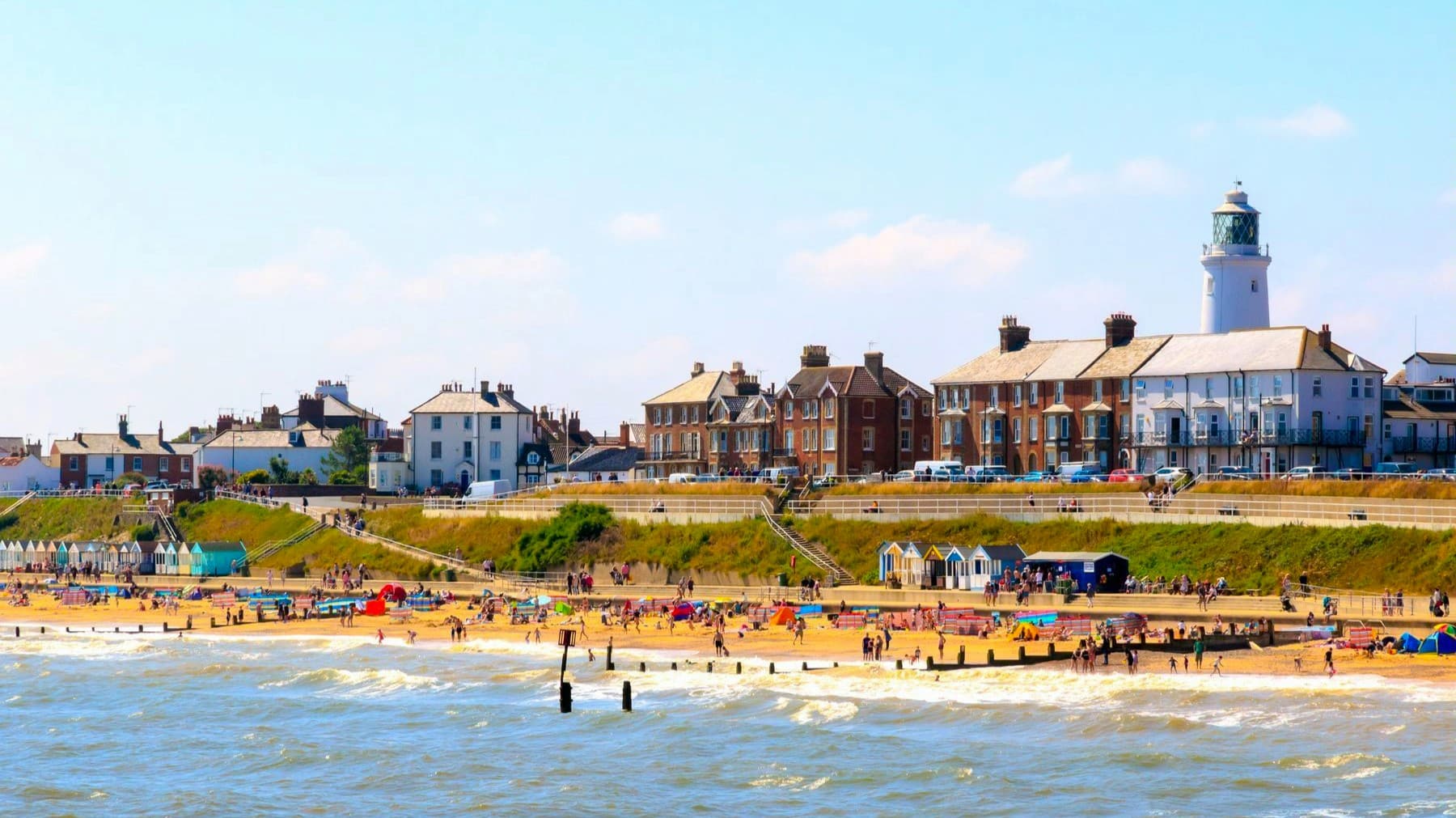Standing guard at England’s southeastern edge, Dover welcomes visitors with its iconic white cliffs rising dramatically from the English Channel. These natural limestone giants have witnessed centuries of history, from Roman invasions to World War II battles, making Dover one of Britain’s most historically significant coastal towns.
🏠 Where to Stay in Dover
- 🏨 4-Star: Hubert House
- 🛏️ 3-Star: Dover's Restover Bed & Breakfast
- 💸 Cheap: The Park Inn
- 🏢 Apartament: Luxury Garden Flat Under the Castle
- 👨👩👧👦 For Families: Churchill Hotel
- 🏩 For Couples: Castle House Guest House
Whether you’re walking along the famous chalk cliffs, exploring the massive Dover Castle with its secret wartime tunnels, or watching ships navigate the busy harbor, Dover offers a perfect mix of natural beauty and rich heritage. The town’s location, just 20 miles from France, has shaped its character as Britain’s gateway to Europe, creating a unique blend of coastal charm and historical importance that makes every visit memorable.
Best Things to Do in Dover, England
1. White Cliffs
Natural Wonder: The White Cliffs of Dover rise dramatically to 350 feet (110m), creating one of England’s most iconic coastal landscapes. I discovered that these magnificent chalk faces stretch for 8 miles along the coastline, with striking black flint streaks creating natural patterns against the white backdrop.
Geological Marvel: Walking along the cliffs, you’ll be standing on an incredible piece of Earth’s history. The chalk formed roughly 70 million years ago when this entire area lay beneath an ancient ocean. Each half-millimeter of chalk represents about 180 coccoliths – tiny skeletal fragments from marine algae that slowly built up on the seabed.
Adventure Spot: Shakespeare Beach offers the closest point to France, making it the traditional starting point for Channel swimmers. The shingle beach provides excellent views of Shakespeare Cliff and deep rock pools at low tide.
Historical Significance: These cliffs have witnessed countless historical moments, from Julius Caesar’s arrival in 55 BC to serving as a symbolic guardian during WWII. During the Battle of Britain, reporters gathered at Shakespeare Cliff to watch aerial dogfights overhead.
⭐️ Best tour
- Dover & White Cliffs Tour; Canterbury, Coastal Towns & Castles – When your cruise ship visits Dover, make the most of your time in England’s county of Kent while avoiding logistical headaches. Meet your driver-guide at the port, settle into a luxury minibus, and admire the countryside as you travel from sight to sight.
2. Dover Castle
Stone Sentinel: Standing before Dover Castle, I’m struck by its commanding presence atop the white cliffs. Known as the “Key to England,” this fortress has guarded our shores for over 2,000 years, and I can feel its power just looking up at its mighty walls.

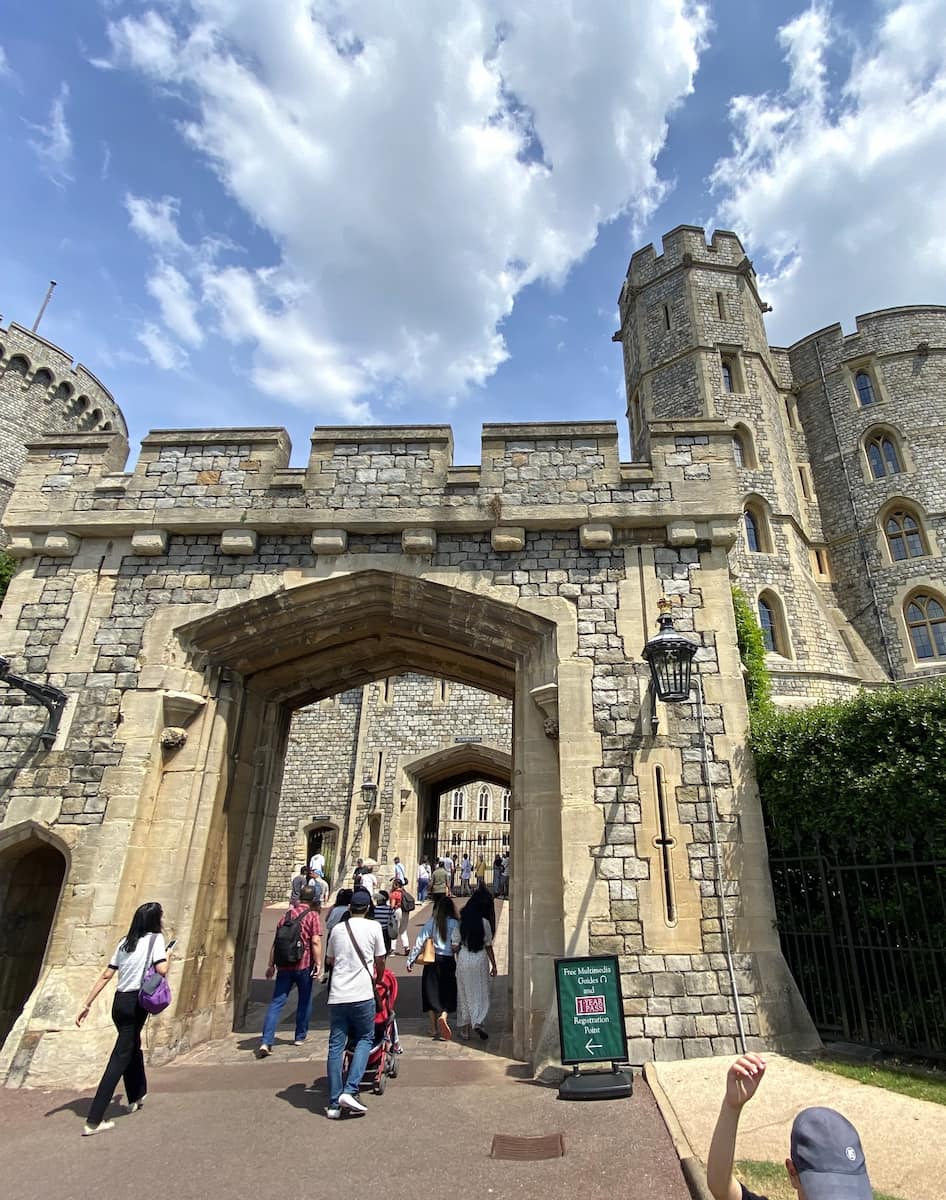
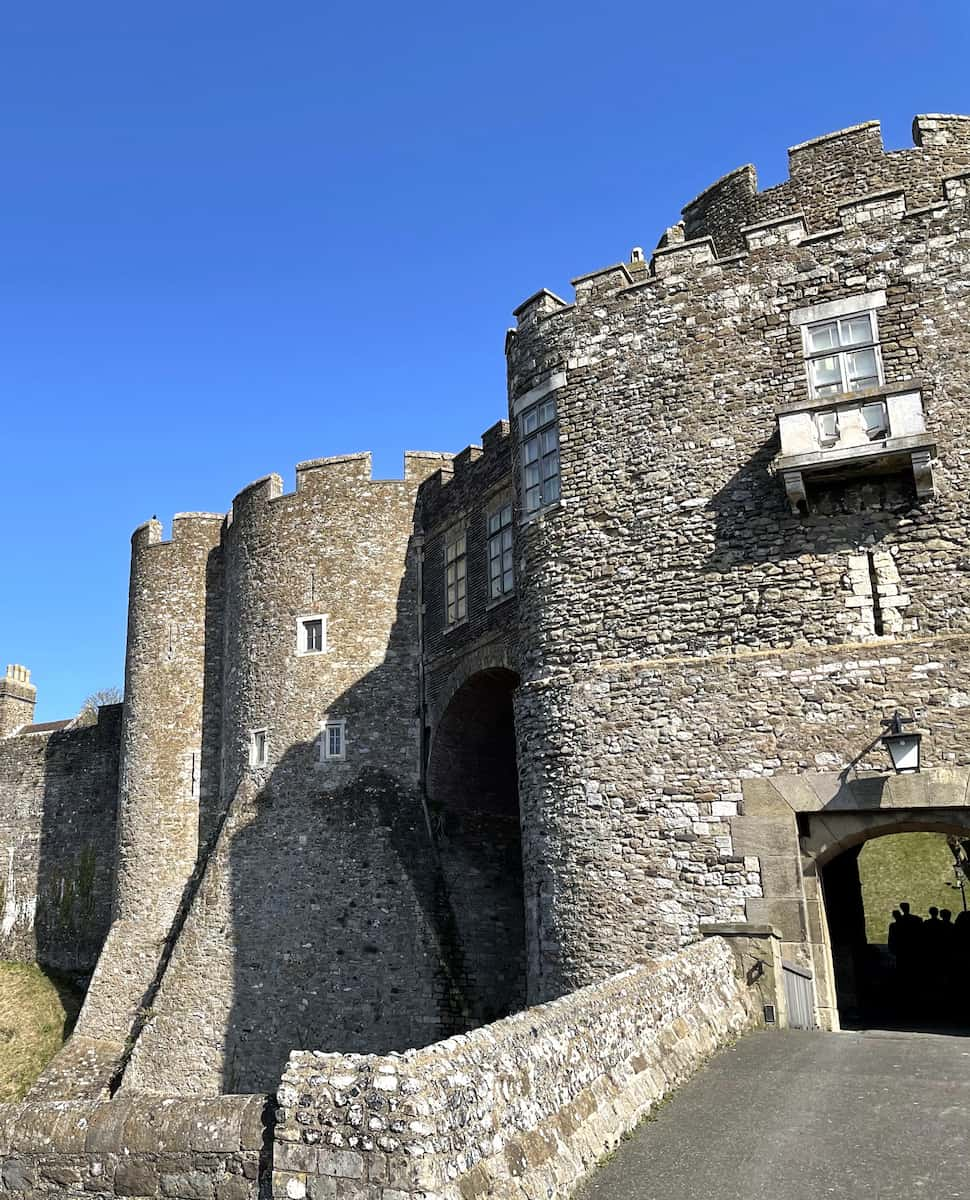
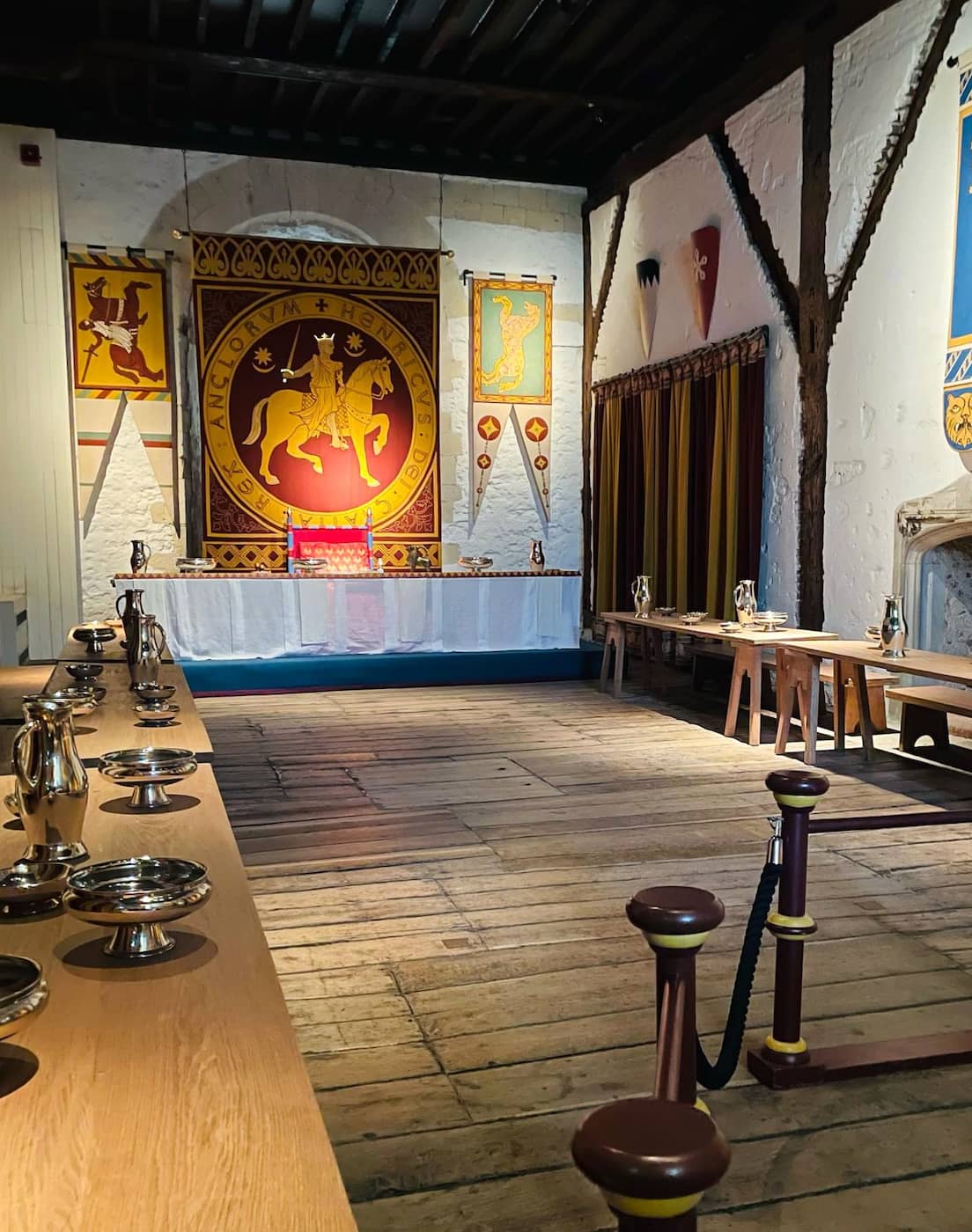
Ancient Beacon: The most fascinating discovery of my visit was the Roman lighthouse (pharos), still standing after 2,000 years. It’s one of only three Roman lighthouses left in the world, and I found it incredible to think of Roman ships using its light to guide them into the harbor.
Royal Power: The Great Tower, built by Henry II, dominates the inner bailey. Walking through its massive doorway, I felt transported back to the 12th century. The stone walls are so thick, they keep the interior naturally cool even on warm days.
War Command: My most moving experience was exploring the wartime tunnels where Operation Dynamo was masterminded. Vice Admiral Ramsay and his team worked tirelessly here to rescue 338,226 troops from Dunkirk in just nine days.
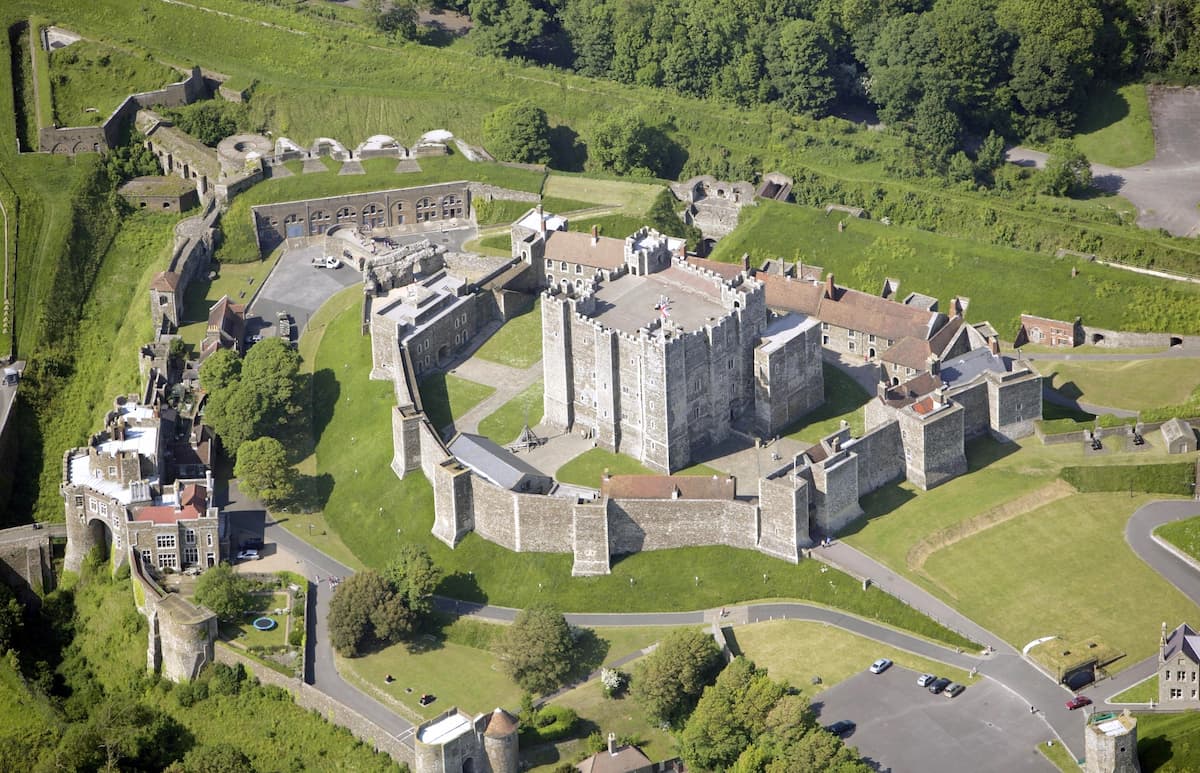
Ticket Type
Price (£)
Price (€)
Adult
24.50
28.70
Child (5-17)
14.70
17.20
Family (2+3)
63.70
74.60
⭐️ Best activities
- Tour: Small Group Canterbury, Dover Castle and Cliffs & Kent Villages Day Tour – Escape England’s capital in favor of rural Canterbury, Dover, and Kent on a full-day trip from London. In an air-conditioned coach, tick off the traditional English villages of Greenwich and Chilham, the famous White Cliffs of Dover and its castle, and the historic city of Canterbury, famed for its UNESCO-listed cathedral.
- Ticket online: Dover Castle: Entry Ticket – Dating back to the days of the Norman Conquest, Dover Castle has served as an essential part of England’s defences for nearly 1,000 years. From medieval kings to wartime admirals, the castle is ripe with British history.
3. Western Heights & Grand Shaft
Hidden Fortress: Walking through Western Heights feels like discovering a secret military city. I stumbled upon massive fortifications carved right into the hillside, with sweeping views of Dover Harbor that took my breath away.
Triple Wonder: The Grand Shaft is truly unique – imagine three spiral staircases winding down 140 feet through the chalk cliffs. I’ve never seen anything like this triple helix of Purbeck limestone, built to move troops quickly between the town and barracks.
Nature’s Canvas: The fortress is surrounded by wildflower meadows that burst with color in spring and summer. I spotted several butterflies while walking the three circular nature trails.
Time Travel: The North Entrance still bears witness to its 1860s origins with its impressive defensive system of bridges and tunnels. Walking through these passages, you can almost hear the echoes of marching soldiers.
4. Roman Painted House
Time Portal: Stepping into the Roman Painted House on New Street feels like walking through a time machine. Built around AD 200, these remarkably preserved ruins opened my eyes to daily life in ancient Portus Dubris.
Color Story: The walls still display vibrant reds, greens, and yellows – the best-preserved Roman wall paintings north of the Alps. I was amazed to see Bacchus-themed designs still visible after 1,800 years.
Hidden Heat: The most fascinating feature I discovered was the hypocaust – Rome’s ingenious underfloor heating system. You can clearly see how warm air circulated beneath the floors to heat the rooms.
Admission
Price (£)
Price (€)
Adult
5.00
5.85
Child (5-16)
3.00
3.50
Family (2+2)
12.00
14.00
⭐️ Best tour
- Private Tour from Dover – Planned with cruise passengers in mind, this private excursion combines a port pick-up and/or drop-off service with visits to the UNESCO World Heritage Site of Canterbury Cathedral as well as Rochester, a city with Roman roots.
Local Culture at Museums
1. Dover Museum
Ancient Marvel: Standing before the Bronze Age Boat in Dover Museum, I’m face-to-face with the world’s oldest known sea-going vessel. This 3,500-year-old wooden treasure sits in a specially designed gallery, just yards from where workers discovered it in 1992.
Time Travel: The boat gallery spreads across three fascinating floors in the town center. What caught my eye immediately were the interactive exhibits where you can examine ancient artifacts under microscopes.
Weather Watch: The museum offers a perfect indoor escape during Dover’s frequent rain showers. The temperature-controlled boat gallery ensures perfect viewing conditions year-round.
Smart Route:
- Ground floor: Stone Age to Saxon exhibits
- First floor: Bronze Age Boat Gallery
- Mezzanine: Special exhibitions
2. Transport Museum & Maritime History
Time Machine: Located in Willingdon Road, Whitfield, Dover Transport Museum took me on a fascinating journey through Kent’s maritime and transport heritage. The moment I stepped inside, the gleaming vintage vehicles and recreated street scenes transported me back in time.
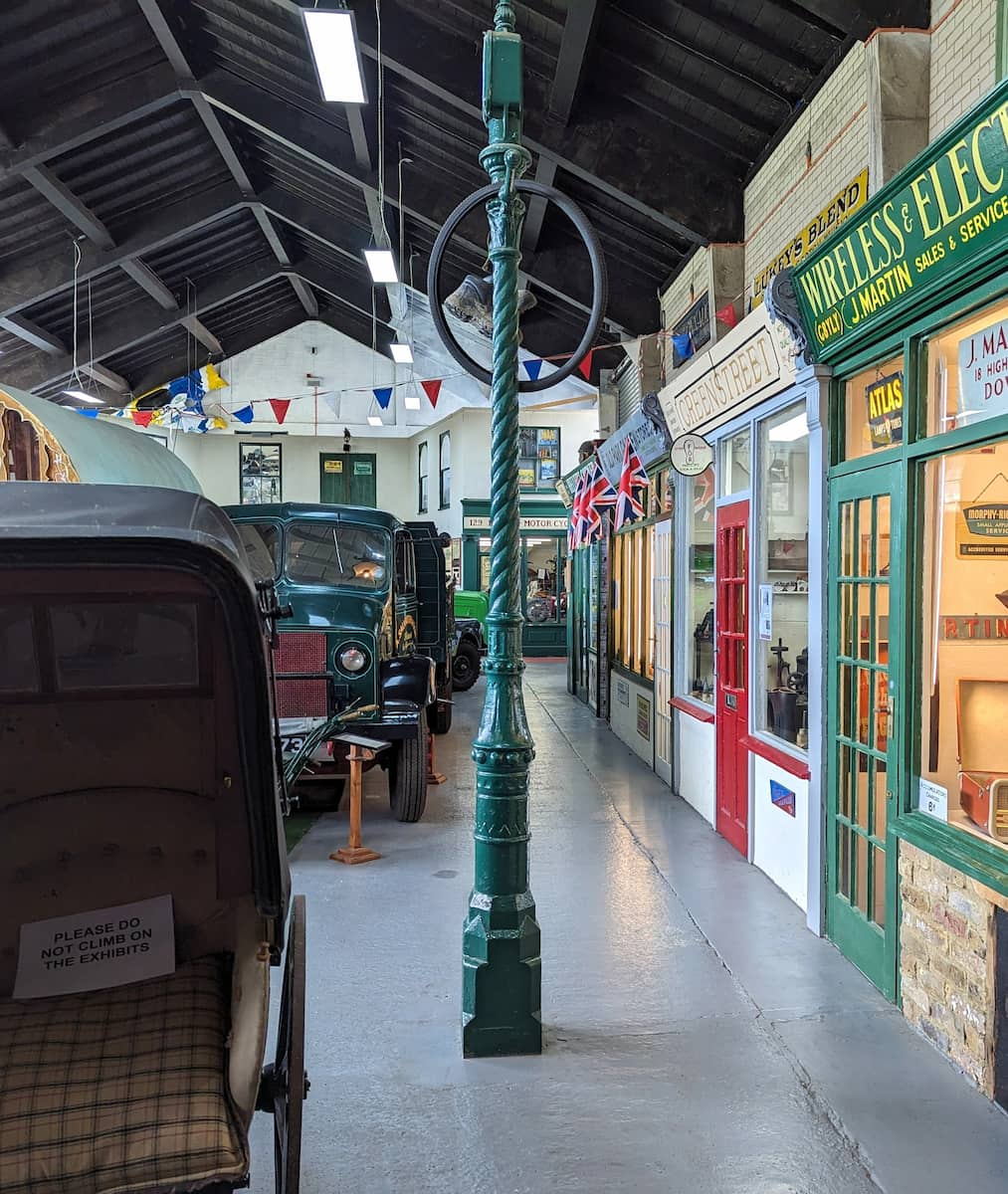



Rare Treasures: The museum houses some incredible pieces – I was particularly impressed by the rare Austin A90 Atlantic and the genuine charabanc. The Norman motorcycle collection is actually the world’s largest.
Maritime Marvel: The Dover Car Ferry and Train Ferry exhibition showcases fascinating memorabilia from cross-channel operations. There’s even a special section dedicated to Channel Tunnel construction artifacts from Shakespeare Cliffs.
Living History: The two large exhibition halls feature meticulously recreated Dover street scenes. Walking through the vintage garage and motorcycle shop felt like stepping into a 1950s movie set.
Outdoor Adventures Around Dover
1. Samphire Hoe Country Park
Hidden Gem: Just two miles west of Dover, I discovered England’s newest piece of land – a stunning 30-hectare nature reserve created from Channel Tunnel excavations. Walking beneath the towering White Cliffs, it’s hard to believe this peaceful haven was built from 4.9 million cubic meters of chalk marl.
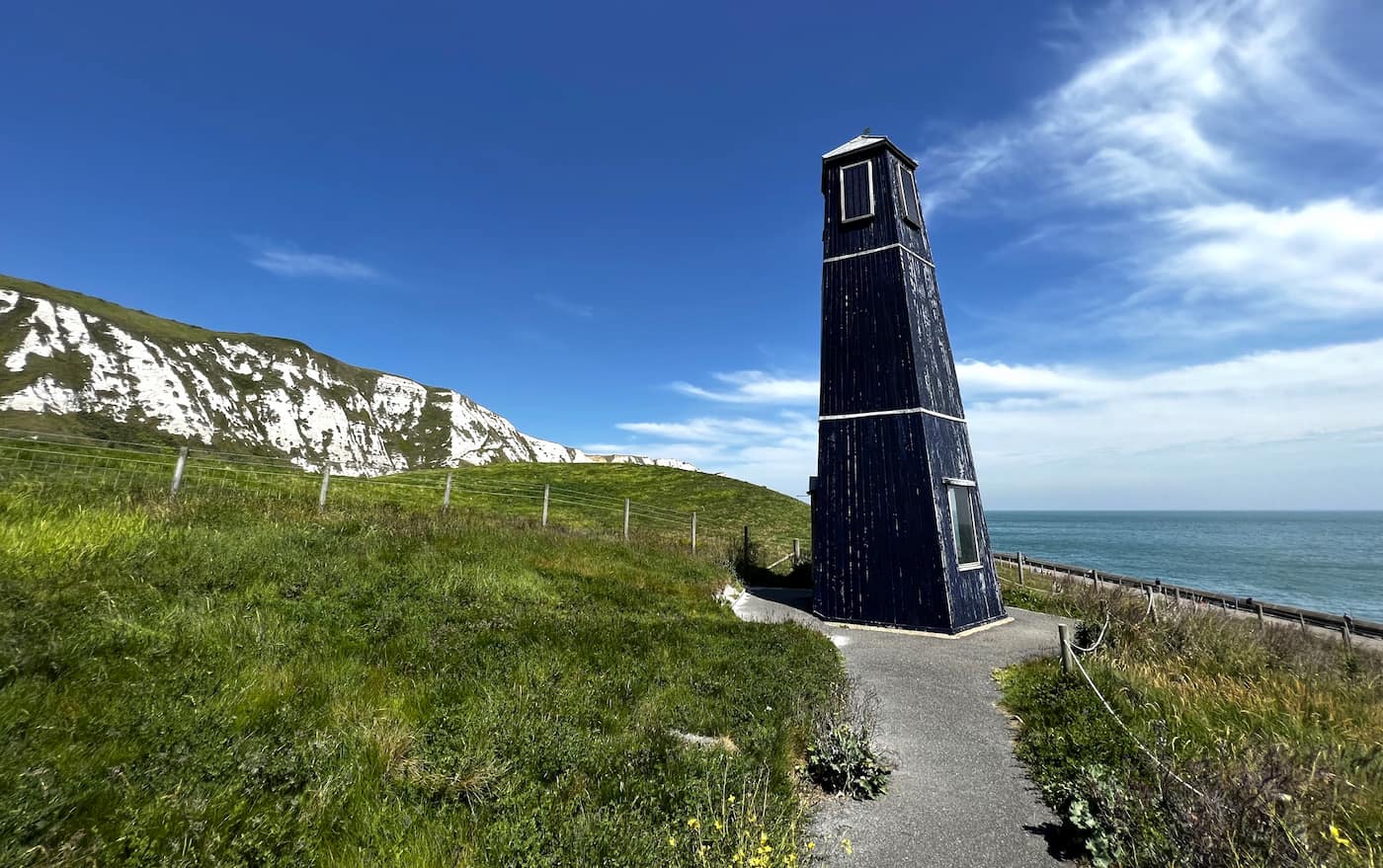
Nature’s Canvas: In just one square meter, I counted over 40 different flowering plant species. The rare chalk grassland has become home to marbled white butterflies, and I even spotted kestrels hovering overhead.
Peaceful Paths: The walking trails offer spectacular views across the English Channel – on clear days, you can see France. My favorite route circles the entire reserve, passing by peaceful ponds and coastal viewpoints.
Must-See Features:
- Education shelter with wood-burning stoves
- Rock pools at low tide
- Rare chalk grassland habitat
2. St Margaret’s Bay
Hidden Cove: Nestled between towering white cliffs, St Margaret’s Bay feels like Kent’s best-kept secret. I discovered this sheltered shingle beach just minutes from Dover, where the dramatic chalk cliffs create a perfect natural amphitheater.
Coastal Magic: On clear days, I could actually see France across the Channel – it’s only 18 miles away! The beach serves as a starting point for brave Channel swimmers, though my phone thought I was already in France.
Insider Tip: Visit during low tide when fascinating rock pools emerge, perfect for fossil hunting and marine life spotting. Bring water shoes – the rocky descent can be challenging.
Literary Links: Walking along the promenade, I passed the whitewashed house where Ian Fleming wrote ‘Moonraker’. Just beyond sits The Coastguard – proudly claiming to be Britain’s nearest pub to France.
Day Trips from Dover
1. Richborough Roman Fort & Deal Castle
Roman Gateway: Standing atop the reconstructed 8-meter Claudian Gateway at Richborough Roman Fort, I felt transported back 2,000 years to when Roman sentries watched over Britain’s shores. The panoramic views stretch across picturesque Kent countryside all the way to the coast.
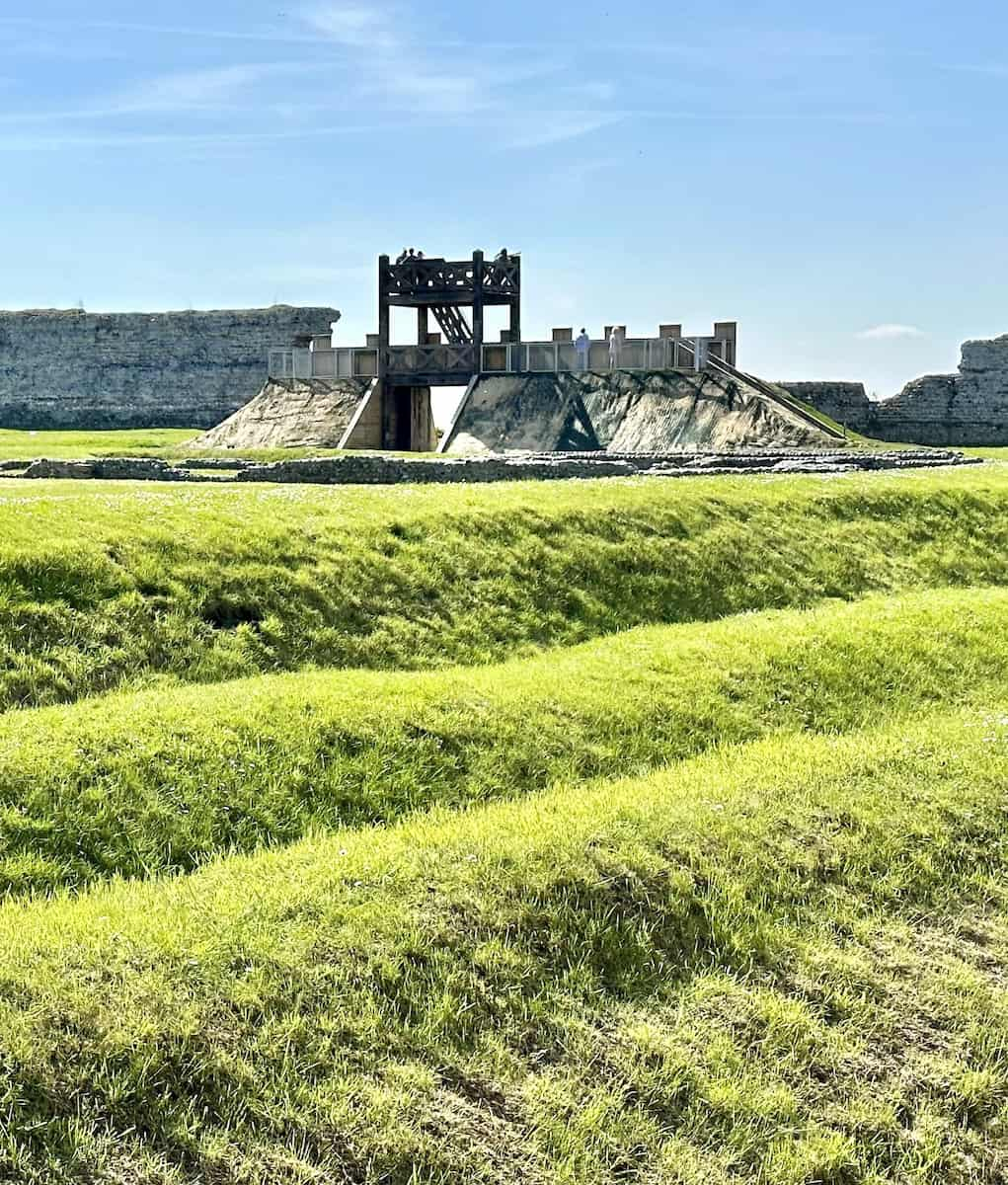
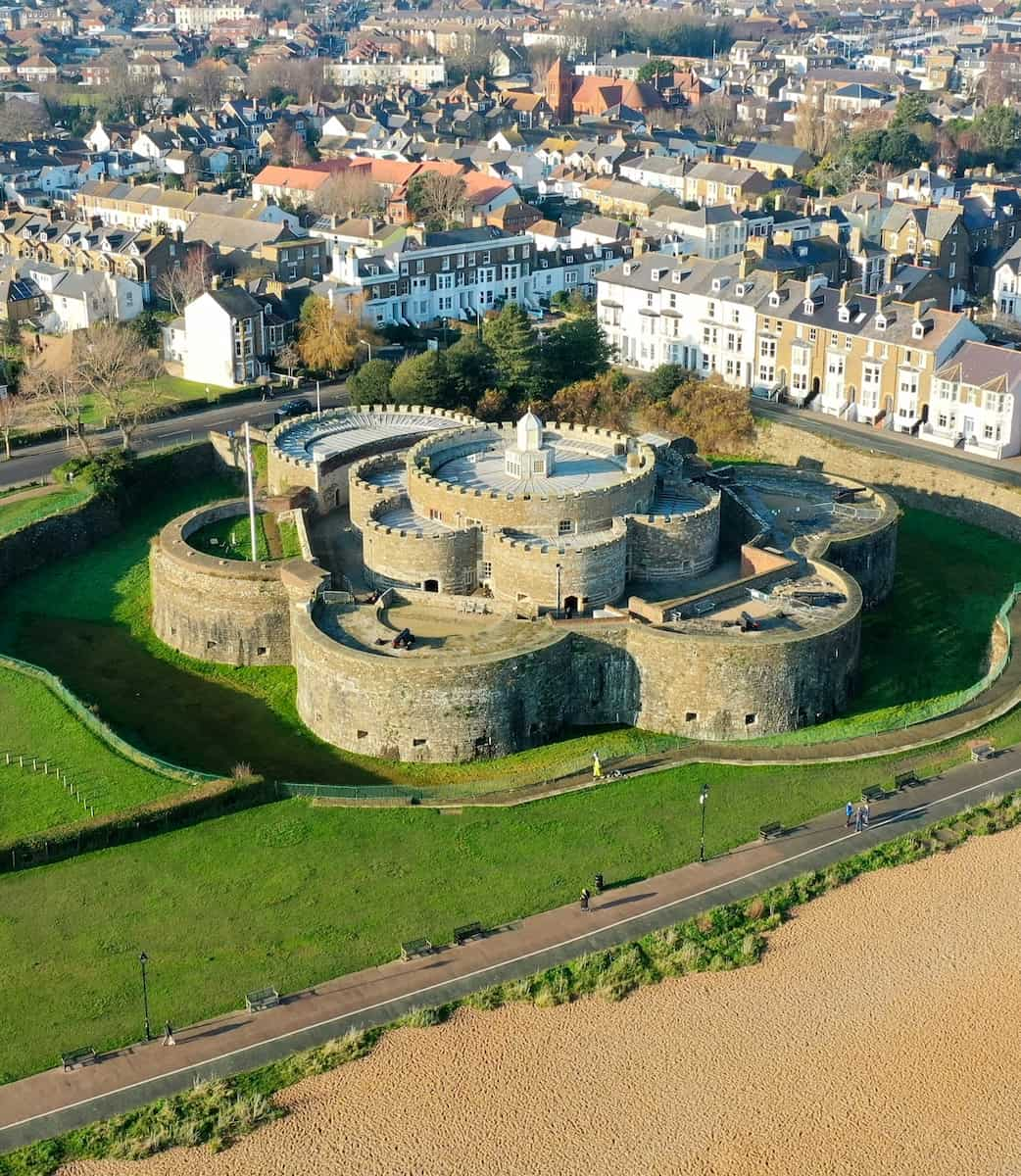
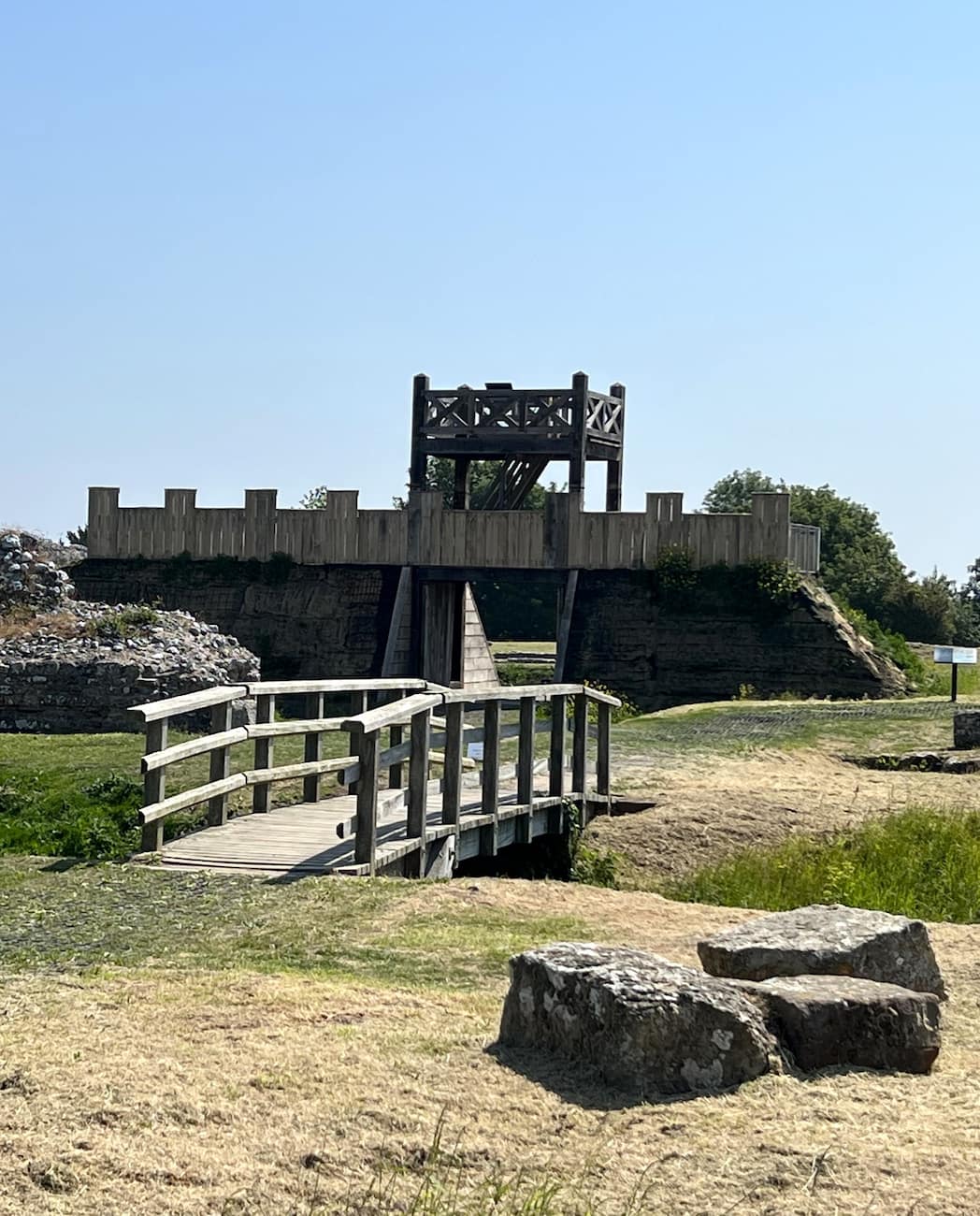
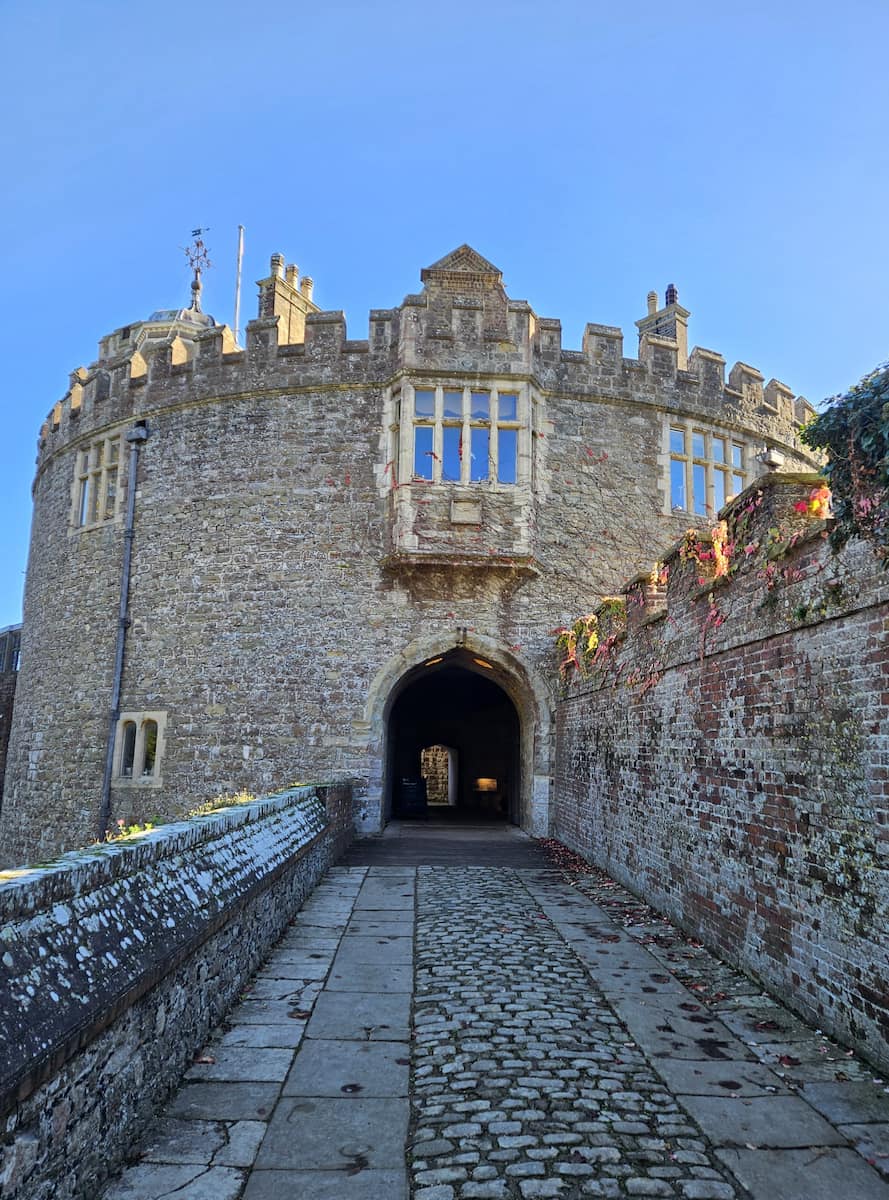
Hidden Treasures: The recently revamped museum houses remarkable artifacts from the past century of excavations – from delicate hairpins to statues of Roman gods. Walking among the massive stone walls that still stand several meters high, I could almost hear the echoes of Roman soldiers.
Arena Discovery: One of the most exciting recent finds at Richborough was uncovered excavations of the amphitheatre – rare traces of red and blue paint still clinging to the arena walls, along with a hidden carcer (holding cell) for gladiators and wild animals. This discovery provides a unique glimpse into how colorful and dramatic the amphitheatre would have appeared during Roman times.
2. Battle of Britain Memorial
Clifftop Tribute: Perched dramatically on the White Cliffs between Dover and Folkestone, I found myself standing before life-sized replicas of a Spitfire and Hurricane – silent sentinels against the backdrop of the English Channel. The Spitfire is particularly special, having been newly installed after its predecessor was damaged by Storm Ciaran.
Sky Stories: The heart of the site features the National Memorial to the Few, which comes alive at dusk when floodlights illuminate the statue of a seated pilot gazing towards France. Walking around the Christopher Foxley-Norris Memorial wall, each name tells a story of courage.
Modern Marvel: Inside The Wing, I discovered the Scramble Experience – an interactive journey that brings WWII aviation history to life. The first-floor café offers spectacular views across the Channel to France, making it my favorite spot for morning coffee.
⭐️ Best tour
- Battle of Britain tour with White Cliffs of Dover – Here you will obtain unsurpassed views of locations over which the Battle was fought; re-live the sights and sounds of an original fighter station and an original, unchanged, pub once frequented by aircrew in 1940.
Practical Information for Visitors
How to Get to Dover
Rail Routes: After testing various options, I’ve found the fastest train route from London to Dover takes just 1 hour 6 minutes from St Pancras International. With 55 daily trains, you’ll have plenty of flexibility for your journey.
Road Trip: The driving distance from London to Dover is 77 miles via the M20 motorway. I prefer taking the scenic A2/M2 route through Kent’s countryside, which offers stunning views of the North Downs.
Budget Tip: Book train tickets 30 days in advance for the best deals – I’ve found fares as low as £12.60 (€14.70). For drivers, sharing fuel costs through rideshare services can reduce expenses to around £10 (€12).
Key Train Routes to Dover:
- London St Pancras: Direct services hourly
- London Bridge: Direct services with scenic coastal views
- London Victoria: Direct but slower scenic route
Best Time to Visit
Spring Magic: After visiting Dover in all seasons, I’ve found April to June offers the most enchanting experience. The weather hovers at a comfortable 15-20°C (59-68°F), perfect for exploring the White Cliffs without summer’s crowds or winter’s bite.

Summer Scene: July and August bring temperatures up to 31°C (88.5°F), ideal for Shakespeare Beach visits and Channel views. However, I’ve learned to arrive early as parking lots fill quickly during peak season.
Climate Watch: Dover’s coastal location means weather can change quickly. I always pack layers, even in summer. The clifftop paths can be particularly windy, so bring a windproof jacket.
Best Activities by Season
- Spring: Cliff-top walks, wildflower spotting
- Summer: Beach visits, outdoor castle events
- Autumn: Photography, historical tours
- Winter: Storm watching, museum visits
Where to Stay in Dover
Cozy Choices: After exploring numerous stays in Dover, I’ve discovered the city offers two distinct accommodation styles. The historic B&Bs, often in Georgian townhouses, provide a more personal experience, while modern hotels deliver reliable comfort with added amenities.
Heritage Sleep: Several B&Bs occupy restored Victorian townhouses that once housed Channel pilots and maritime officers. I stayed in one where my room featured original 1880s fireplaces and a captain’s viewing window, complete with brass telescope mount – a unique glimpse into Dover’s seafaring past.
Location Logic: Castle Hill Road and Folkestone Road house most family-run B&Bs, perfect for castle visits. I’ve found the marina area better for modern hotels with Channel views.
Save Smart: Book B&Bs directly through their websites – many offer 10-15% discounts compared to booking platforms. I’ve found deals starting from just £24 (€28) per night.
Accommodation Type
Price Range
Includes
Budget Hotels
£24-45 (€28-53)
Basic amenities
Mid-range Hotels
£45-82 (€53-96)
Restaurant, spa access
B&Bs
£35-65 (€41-76)
Breakfast, parking, Wi-Fi
❓ FAQ
What are the best attractions to see at the White Cliffs of Dover?
The world-famous White Cliffs of Dover rise dramatically to 350 feet above sea level, offering spectacular views over the English Channel and France. Visitors can explore the Saxon Shore Way along the clifftops, spot rare wildflowers, and enjoy the chalk grassland walked by grazing cattle and Exmoor ponies. The Fan Bay Deep Shelter, a network of underground tunnels from the Second World War, provides fascinating insights into wartime history.
Is Dover Castle worth visiting?
As the gateway to England, Dover Castle stands as one of the top attractions with years of history dating back to Roman times. The castle features spectacular medieval tunnels, an underground hospital, and the Great Tower. The site played a crucial role during the Second World War, making it well worth a visit for history enthusiasts.
What unique experiences can you have in Dover town?
The seaside town of Dover offers various tourist attractions including Dover Museum with free entry, featuring the famous Bronze Age Boat. Visitors can experience a unique and exhilarating tour with Dover Sea Safari, explore the Dover town hall, or visit the Dover Transport Museum. The town’s location between England and France makes it one of the best places for cross-channel views.
What are the best walking routes around Dover?
The Saxon Shore Way provides excellent stroll opportunities along the top of the cliffs. Visitors can walk from the White Cliffs to the South Foreland Lighthouse, enjoying views over the English Channel. The Pines Garden and the seaside town of Deal are also well worth a visit, offering fun things to do around the town.
Where can visitors find refreshments in Dover?
The Dover district offers several charming spots including Mrs. Knott’s tea room at the South Foreland Lighthouse. The White Cliffs visitor centre features a light and airy café serving hot and cold drinks with stunning views of the port of Dover. The seaside town also hosts various establishments where visitors can spend the day enjoying local refreshments.
